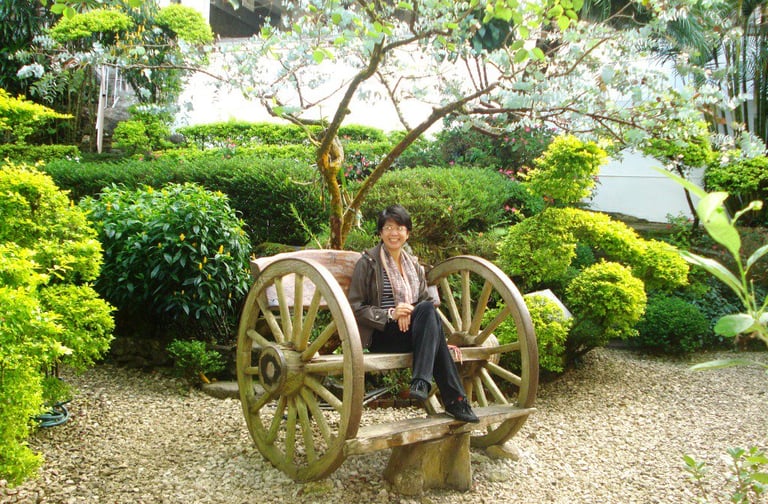Language in storytelling from our Hybrid Filipino Culture
WRITER AT WORDHOUSE


Multicultural Thinking in Our Hybrid Contexts
As Filipino writers, we belong to a hybrid culture. Our ways of speaking and thinking are not neatly contained in one tradition. We engage with the world with the rhythms and sensibilities of our native tongues that are as many as there are Philippine islands.
When we write in English, for example, we go beyond following the rules of grammar and simple code-switching. Our 'Filipininized' expressions: comfort room, viand, open/close the light are not slips or mistakes but they're hybrid forms. Our Filipino English is alive, dynamic, and layered: how we code culture, memory, and history is less about giving exact equivalents, and more about claiming space for our voices and the ways we make meaning.
Preserving Our Identity Across Borders
Our languages carry memory, tradition, and identity. Words like titingnan ko, samahan mo ako, pasensya ka na, and tuloy po kayo are more than expressions. They are gestures of community, relationship, and belonging. In writing from our multicultural settings, we try to keep these cultural markers alive.
As authors, translators, scriptwriters, and content creators, we hold on to the heart of our language through critical thinking and careful choices in storytelling as we write across cultures.


Nuance and the Importance of Registers
Anong dating ng sinulat natin? How the words sound, how tone will be received, and what meaning will listeners take away may not be the questions we're asking when we're writing. But part of our practice is being conscious of registers - dating - formal, conversational, technical, casual, or intimate. As authors, translators, copywriters, and editors, we keep thinking of how the reader will perceive our language.
Every reader interprets through their context, expectations, and experiences. As Filipino writers we make choices that bridge gaps in hybrid interpretation, empathy, and judgment. We aim for language that connects rather than confuses, supports rather than alienates.
Our Professional Roles Across Cultures
Wherever we are, any language we use in our writing brings its own freedoms and constraints.
Abroad, there are Filipino parents wanting their kids to learn a Filipino language. There are Filipino balikbayans negotiating their place as third-generation learners of a Philippine language. Real time, immediate interactions will decide whether to downgrade, upgrade, or otherwise adapt the language to fit our audience.
Every word we choose, every phrase we shape, is influenced not only by grammar and style, but by the realities of who we are addressing and where they are. Our language is thoughtful, intentional, and committed to bridging various cultures and communities.
Migrant Realities on our Page
Migration in general, and the Filipino migrant experience in particular, test how language emerges from observation and empathy. They call for our careful attention not only to culture but also to the everyday gestures of Filipinos: how we move, dwell, work, buy, sell, and navigate public and private spaces. Our mobilities are shaped by distance from home, the weight of isolation, and the complexities of new environments. Writing about them asks for nuance, precision, sensitivity, and imagination. Our language cannot remain merely descriptive but must also be prophetic. In our storytelling, we witness, critique, preserve, and reimagine, telling the truth of our people who may leave their home behind yet always carry it into another.
As writers, translators, and editors, our work with language is shaped by observing Filipino communities, not just individuals. In their movements and silences, we find the echoes that guide how we write and translate. We try to understand both the freedoms and the constraints that geography imposes on our people. The Filipino diaspora is never neutral; every context, whether in fast-paced New York, polite Japan, the hybrid Caribbean, or reserved England, reshapes how we carry and reapply our native language. Through our storytelling, we create space for our language to take root, adapting to the cultures of our host countries without losing the memory of home.




Professions—clear words can mean comfort, safety, even survival
Vocations—language at work builds dignity, trust, and belonging.
Performance—across languages words travel, adapt, and connect.
Language Strategy
We know that writing, editing, or translation is about far more than checking grammar, polishing sentences, or choosing the right vocabulary. “You” in Tagalog can take many forms—ikaw, kayo, ka, mo, iyo, inyo, ninyo—each chosen for context and connection. “Witch” is not always mangkukulam; it can be manggagaway or mananawas, depending on meaning and audience. We must consider who will read our words, how they will interpret them, and what understanding they will carry.
Whether we are editing reports in Singapore, translating technical leaflets for home, or preparing content for the wider Filipino diaspora, we cannot write from parochial ears. We must choose our words with care, attuned to both meaning and context, so that our language honors Filipino ways of relating, carries memory and practice, and leaves traces of home wherever it goes.






